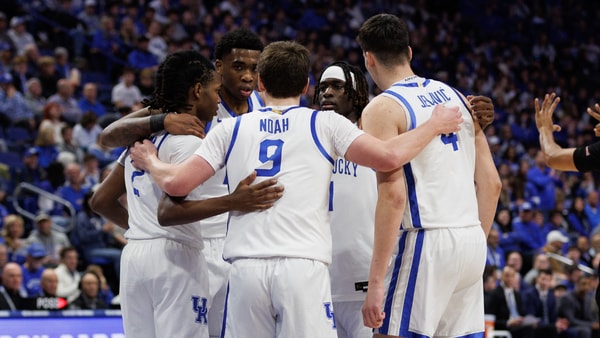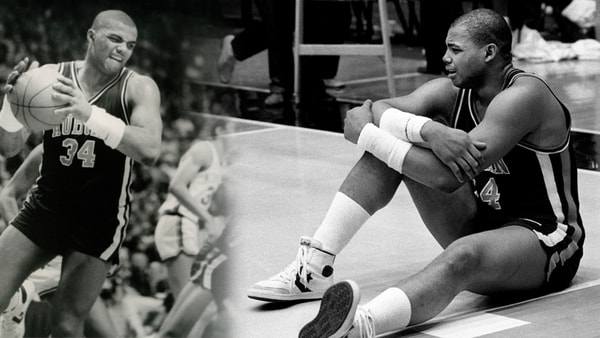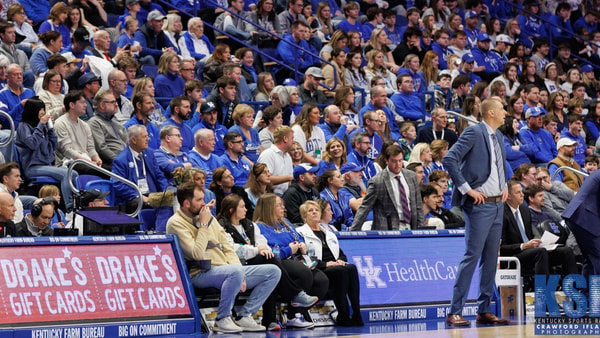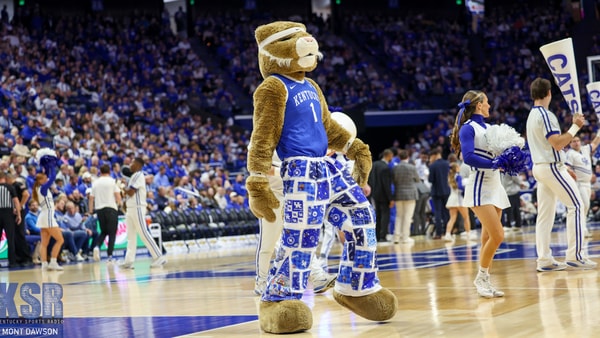
As Christians around the world gather to celebrate our most sacred day of the year, it is important to remember what is easily forgotten about Easter: It actually happened. Easter is not an inspirational fable of optimism and hope; Easter is an event. A historical event where a dead man came back to life never to taste death again. Or so we claim. But I hope we also have the humility and intellectual honesty to admit how ridiculous that claim sounds to our modern world.
It is very easy for Christians to take for granted our little bubble of belief, where a miracle like the resurrection is actually plausible, but what the Christian subculture takes for granted, the greater culture takes as nonsense. This is why I think the story of Thomas from John chapter 20 is so compelling in our day and age. He is referred to as “Doubting Thomas,” but I think a more fitting title would be “21st Century Enlightened Western Secular Culture Thomas,” because in his story, we get to witness the prevailing worldview of our time on display.
When Thomas is told by his friends that they have seen the risen Jesus, this is his response: “Unless I see in his hands the mark of the nails, and place my finger into the mark of the nails, and place my hand into his side, I will never believe.” Notice how belief is contingent upon empirical evidence. He will “never believe” unless he sees and touches, unless with his own physical senses he encounters irrefutable evidence. It actually sounds like a quote from the modern secular atheists, not one of the disciples.
Richard Dawkins: “Faith is the great cop-out, the great excuse to evade the need to think and evaluate evidence.”
Lawrence Kraus: “Our conclusions must be based on empirical knowledge, a truly open mind means forcing our imaginations to conform to the evidence.”
Christopher Hichens: “That which can be asserted without evidence can be dismissed without evidence.”
The Disciple Thomas: “Unless I see in his hands the mark of the nails, and place my finger into the mark of the nails, and place my hand into his side, I will never believe.”
Thomas, much like our secular age, is demanding evidence in order to believe, which is why his story warrants unique consideration in our day. To do so, I believe his statement deserves both a critique and an affirmation.
The critique of Thomas’ demand is that it is self-defeating. His criteria for belief are that he must see it and touch it or he will not believe it. Again, this is no different than the criteria of our modern world that exclusively trusts the rigor of the scientific method. If it cannot be proven to be true in a lab, then it cannot be true, or at least we cannot know for certain that it is true. But the problem with this demand is that the majority of things we know to be true do not pass this test.
Things like love, beauty, purpose, morality, even logic, upon which the sciences are based—these things that we all believe in and all live our lives according to—don’t meet the demand of physical evidence. When Thomas says “I will never believe in something that I cannot see or touch,” he has unknowingly eliminated the vast majority of things he believes. In reality, our scope of knowledge goes far beyond the narrow capacity of the physical sciences. Therefore to make a claim as brazen as only what can be tested can be trusted is to eliminate many things we wholeheartedly trust in.
But at the same time, we need to affirm Thomas here. Perhaps his demand is a bit overstated, but let’s be honest: His friends are asking him to believe a pretty big claim. History’s biggest claim, in fact. You don’t believe a dead man came back to life without any good reason to believe it, let alone die for this belief, as Thomas eventually did. So of course Thomas is skeptical, as he should be.
That’s why I love how Jesus responds. He does not shame Thomas for his doubts and demands. Instead he graciously and tenderly accommodates them. Eight days later, Jesus appears to Thomas and “Peace be with you” are his first words to his skeptical friend. Then Jesus provides the evidence for every demand Thomas has made, “Put your finger here, and see my hands; and put out your hand, and place it in my side. Do not disbelieve, but believe.” It is a beautiful picture of Jesus willing to meet him in the struggle of his unbelief and give him what he needs to believe.
But, of course, this only begs the question for the modern skeptic: Why hasn’t Jesus done that for me? If Jesus were to appear and let me see and touch him, then I too would believe. But the point of the historical, public, verifiable (or falsifiable) nature of the resurrection is that Jesus has done that for all of humanity. In appearing, not just to Thomas, but to literally hundreds of eye witnesses, the resurrection of Jesus became the most thoroughly documented and attested event in ancient history. So overwhelming is the evidence that any objective consideration (objective being the operative word) would require forsaking intellectual honesty to
disbelieve in the miracle. In other words, it takes a greater leap of faith to disbelieve Jesus than to believe him. (If you are interested in investigating the evidence, I am writing an Easter
blog series this week on our church’s website.)
“But it’s just impossible,” our cynicism cries out. “Why not,” the evidence responds. This is why eventually debating evidence will turn into debating worldviews. If a person uncompromisingly believes that supernatural events cannot and do not happen, then no amount of evidence will convince that person. My only caution is that a worldview void of the supernatural is a very audacious and unsubstantiated belief system that you choose to accept by faith, a faith that resurrection evidence is sternly challenging. Either your worldview will have to expand to make room for the evidence or you will choose to stubbornly deny the evidence to maintain your worldview. But if a worldview has room for miracles, then all the evidence makes perfect sense, and suddenly the unbelievable becomes believable: Jesus is risen indeed.
Robert Cunnigham is the Senior Pastor of Tates Creek Presbyterian Church. Follow him on twitter @tcpcrobert and email any comments or questions to [email protected]
[mobile_ad]
 As Christians around the world gather to celebrate our most sacred day of the year, it is important to remember what is easily forgotten about Easter: It actually happened. Easter is not an inspirational fable of optimism and hope; Easter is an event. A historical event where a dead man came back to life never to taste death again. Or so we claim. But I hope we also have the humility and intellectual honesty to admit how ridiculous that claim sounds to our modern world.
It is very easy for Christians to take for granted our little bubble of belief, where a miracle like the resurrection is actually plausible, but what the Christian subculture takes for granted, the greater culture takes as nonsense. This is why I think the story of Thomas from John chapter 20 is so compelling in our day and age. He is referred to as “Doubting Thomas,” but I think a more fitting title would be “21st Century Enlightened Western Secular Culture Thomas,” because in his story, we get to witness the prevailing worldview of our time on display.
When Thomas is told by his friends that they have seen the risen Jesus, this is his response: “Unless I see in his hands the mark of the nails, and place my finger into the mark of the nails, and place my hand into his side, I will never believe.” Notice how belief is contingent upon empirical evidence. He will “never believe” unless he sees and touches, unless with his own physical senses he encounters irrefutable evidence. It actually sounds like a quote from the modern secular atheists, not one of the disciples.
Richard Dawkins: “Faith is the great cop-out, the great excuse to evade the need to think and evaluate evidence.”
Lawrence Kraus: “Our conclusions must be based on empirical knowledge, a truly open mind means forcing our imaginations to conform to the evidence.”
Christopher Hichens: “That which can be asserted without evidence can be dismissed without evidence.”
The Disciple Thomas: “Unless I see in his hands the mark of the nails, and place my finger into the mark of the nails, and place my hand into his side, I will never believe.”
Thomas, much like our secular age, is demanding evidence in order to believe, which is why his story warrants unique consideration in our day. To do so, I believe his statement deserves both a critique and an affirmation.
The critique of Thomas’ demand is that it is self-defeating. His criteria for belief are that he must see it and touch it or he will not believe it. Again, this is no different than the criteria of our modern world that exclusively trusts the rigor of the scientific method. If it cannot be proven to be true in a lab, then it cannot be true, or at least we cannot know for certain that it is true. But the problem with this demand is that the majority of things we know to be true do not pass this test.
Things like love, beauty, purpose, morality, even logic, upon which the sciences are based—these things that we all believe in and all live our lives according to—don’t meet the demand of physical evidence. When Thomas says “I will never believe in something that I cannot see or touch,” he has unknowingly eliminated the vast majority of things he believes. In reality, our scope of knowledge goes far beyond the narrow capacity of the physical sciences. Therefore to make a claim as brazen as only what can be tested can be trusted is to eliminate many things we wholeheartedly trust in.
But at the same time, we need to affirm Thomas here. Perhaps his demand is a bit overstated, but let’s be honest: His friends are asking him to believe a pretty big claim. History’s biggest claim, in fact. You don’t believe a dead man came back to life without any good reason to believe it, let alone die for this belief, as Thomas eventually did. So of course Thomas is skeptical, as he should be.
That’s why I love how Jesus responds. He does not shame Thomas for his doubts and demands. Instead he graciously and tenderly accommodates them. Eight days later, Jesus appears to Thomas and “Peace be with you” are his first words to his skeptical friend. Then Jesus provides the evidence for every demand Thomas has made, “Put your finger here, and see my hands; and put out your hand, and place it in my side. Do not disbelieve, but believe.” It is a beautiful picture of Jesus willing to meet him in the struggle of his unbelief and give him what he needs to believe.
But, of course, this only begs the question for the modern skeptic: Why hasn’t Jesus done that for me? If Jesus were to appear and let me see and touch him, then I too would believe. But the point of the historical, public, verifiable (or falsifiable) nature of the resurrection is that Jesus has done that for all of humanity. In appearing, not just to Thomas, but to literally hundreds of eye witnesses, the resurrection of Jesus became the most thoroughly documented and attested event in ancient history. So overwhelming is the evidence that any objective consideration (objective being the operative word) would require forsaking intellectual honesty to disbelieve in the miracle. In other words, it takes a greater leap of faith to disbelieve Jesus than to believe him. (If you are interested in investigating the evidence, I am writing an Easter blog series this week on our church’s website.)
“But it’s just impossible,” our cynicism cries out. “Why not,” the evidence responds. This is why eventually debating evidence will turn into debating worldviews. If a person uncompromisingly believes that supernatural events cannot and do not happen, then no amount of evidence will convince that person. My only caution is that a worldview void of the supernatural is a very audacious and unsubstantiated belief system that you choose to accept by faith, a faith that resurrection evidence is sternly challenging. Either your worldview will have to expand to make room for the evidence or you will choose to stubbornly deny the evidence to maintain your worldview. But if a worldview has room for miracles, then all the evidence makes perfect sense, and suddenly the unbelievable becomes believable: Jesus is risen indeed.
Robert Cunnigham is the Senior Pastor of Tates Creek Presbyterian Church. Follow him on twitter @tcpcrobert and email any comments or questions to [email protected]
[mobile_ad]
As Christians around the world gather to celebrate our most sacred day of the year, it is important to remember what is easily forgotten about Easter: It actually happened. Easter is not an inspirational fable of optimism and hope; Easter is an event. A historical event where a dead man came back to life never to taste death again. Or so we claim. But I hope we also have the humility and intellectual honesty to admit how ridiculous that claim sounds to our modern world.
It is very easy for Christians to take for granted our little bubble of belief, where a miracle like the resurrection is actually plausible, but what the Christian subculture takes for granted, the greater culture takes as nonsense. This is why I think the story of Thomas from John chapter 20 is so compelling in our day and age. He is referred to as “Doubting Thomas,” but I think a more fitting title would be “21st Century Enlightened Western Secular Culture Thomas,” because in his story, we get to witness the prevailing worldview of our time on display.
When Thomas is told by his friends that they have seen the risen Jesus, this is his response: “Unless I see in his hands the mark of the nails, and place my finger into the mark of the nails, and place my hand into his side, I will never believe.” Notice how belief is contingent upon empirical evidence. He will “never believe” unless he sees and touches, unless with his own physical senses he encounters irrefutable evidence. It actually sounds like a quote from the modern secular atheists, not one of the disciples.
Richard Dawkins: “Faith is the great cop-out, the great excuse to evade the need to think and evaluate evidence.”
Lawrence Kraus: “Our conclusions must be based on empirical knowledge, a truly open mind means forcing our imaginations to conform to the evidence.”
Christopher Hichens: “That which can be asserted without evidence can be dismissed without evidence.”
The Disciple Thomas: “Unless I see in his hands the mark of the nails, and place my finger into the mark of the nails, and place my hand into his side, I will never believe.”
Thomas, much like our secular age, is demanding evidence in order to believe, which is why his story warrants unique consideration in our day. To do so, I believe his statement deserves both a critique and an affirmation.
The critique of Thomas’ demand is that it is self-defeating. His criteria for belief are that he must see it and touch it or he will not believe it. Again, this is no different than the criteria of our modern world that exclusively trusts the rigor of the scientific method. If it cannot be proven to be true in a lab, then it cannot be true, or at least we cannot know for certain that it is true. But the problem with this demand is that the majority of things we know to be true do not pass this test.
Things like love, beauty, purpose, morality, even logic, upon which the sciences are based—these things that we all believe in and all live our lives according to—don’t meet the demand of physical evidence. When Thomas says “I will never believe in something that I cannot see or touch,” he has unknowingly eliminated the vast majority of things he believes. In reality, our scope of knowledge goes far beyond the narrow capacity of the physical sciences. Therefore to make a claim as brazen as only what can be tested can be trusted is to eliminate many things we wholeheartedly trust in.
But at the same time, we need to affirm Thomas here. Perhaps his demand is a bit overstated, but let’s be honest: His friends are asking him to believe a pretty big claim. History’s biggest claim, in fact. You don’t believe a dead man came back to life without any good reason to believe it, let alone die for this belief, as Thomas eventually did. So of course Thomas is skeptical, as he should be.
That’s why I love how Jesus responds. He does not shame Thomas for his doubts and demands. Instead he graciously and tenderly accommodates them. Eight days later, Jesus appears to Thomas and “Peace be with you” are his first words to his skeptical friend. Then Jesus provides the evidence for every demand Thomas has made, “Put your finger here, and see my hands; and put out your hand, and place it in my side. Do not disbelieve, but believe.” It is a beautiful picture of Jesus willing to meet him in the struggle of his unbelief and give him what he needs to believe.
But, of course, this only begs the question for the modern skeptic: Why hasn’t Jesus done that for me? If Jesus were to appear and let me see and touch him, then I too would believe. But the point of the historical, public, verifiable (or falsifiable) nature of the resurrection is that Jesus has done that for all of humanity. In appearing, not just to Thomas, but to literally hundreds of eye witnesses, the resurrection of Jesus became the most thoroughly documented and attested event in ancient history. So overwhelming is the evidence that any objective consideration (objective being the operative word) would require forsaking intellectual honesty to disbelieve in the miracle. In other words, it takes a greater leap of faith to disbelieve Jesus than to believe him. (If you are interested in investigating the evidence, I am writing an Easter blog series this week on our church’s website.)
“But it’s just impossible,” our cynicism cries out. “Why not,” the evidence responds. This is why eventually debating evidence will turn into debating worldviews. If a person uncompromisingly believes that supernatural events cannot and do not happen, then no amount of evidence will convince that person. My only caution is that a worldview void of the supernatural is a very audacious and unsubstantiated belief system that you choose to accept by faith, a faith that resurrection evidence is sternly challenging. Either your worldview will have to expand to make room for the evidence or you will choose to stubbornly deny the evidence to maintain your worldview. But if a worldview has room for miracles, then all the evidence makes perfect sense, and suddenly the unbelievable becomes believable: Jesus is risen indeed.
Robert Cunnigham is the Senior Pastor of Tates Creek Presbyterian Church. Follow him on twitter @tcpcrobert and email any comments or questions to [email protected]
[mobile_ad]







Discuss This Article
Comments have moved.
Join the conversation and talk about this article and all things Kentucky Sports in the new KSR Message Board.
KSBoard